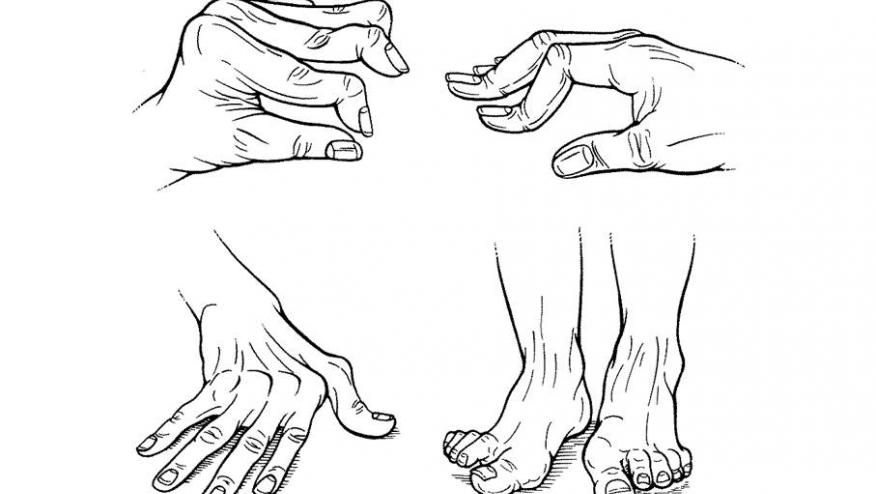EULAR Points on Managing Difficult Rheumatoid Arthritis Save

Treatment of RA may be difficult, as it is estimated that up to 10% of patients meet the EULAR definition of difficult-to-treat rheumatoid arthritis (D2T RA). Now a EULAR task force has promulgated several points to consider (PtCs) in managing D2T RA.
A EULAR Task Force was established and included 26 rheumatologists, along with patients and other rheumatology experienced health professionals. After two systematic literature reviews, clinical questions and treatment challenges in D2T RA were addressed. These Points (PtCs) were based on both evidence and expert opinion (high-quality evidence was scarce), leading to 2 overarching principles and 11 PtCs. PtCs were scored for level of evidence (LoE) and strength of recommendations (SoR). There was a high level of agreement (LOA) with the overarching principles and PtCs (8.4–9.6).
"These PtCs for D2T RA can serve as a clinical roadmap to support healthcare professionals and patients to deliver holistic management and more personalised pharmacological and non-pharmacological therapeutic strategies."
These "points" are unique in directing the rheumatologist's attention to the potential for misdiagnosis and the impact of comorbid conditions on what is perceived as poorly controlled RA.
Definition of Difficult to Treat RA
-
Treatment according to EULAR recommendations and failure of ≥two b/tsDMARDs (with different mechanisms of action) after failing csDMARD therapy (unless contraindicated).
-
Signs suggestive of active/progressive disease
-
The management of signs and/or symptoms is perceived as problematic by the rheumatologist and/or the patient.
Overarching Principles for D2T RA
- These PtCs pertain to patients who fulfil the definition of D2T RA and are underpinned by the EULAR recommendations for the management of RA including the overarching principles (LoA: 9.6)
- The presence or absence of inflammation should be established to guide pharmacological and non-pharmacological interventions (LoA: 9.5)
Points to Consider
- If a patient has a presumed D2T RA, the possibility of misdiagnosis and/or the presence of a coexistent mimicking disease should be considered as a first step (LoE: 5, SoR: D, LoA: 9.3 (1.2))
- Where there is doubt on the presence of inflammatory activity based on clinical assessment and composite indices, ultrasonography (US) may be considered for this evaluation (LoE: 4, SoR: C, LoA: 9.2 (1.4)).
- Composite indices and clinical evaluation should be interpreted with caution in the presence of comorbidities, in particular obesity and fibromyalgia, as these may directly heighten inflammatory activity and/or overestimate disease activity (‡LoE: 5, SoR: D; §LoE: 4, SoR: C; LoA: 9.2 (1.3))
- Treatment adherence should be discussed and optimised within the process of shared decision-making (LoE: 5, SoR: D, LoA: 9.5 (1.0)).
- After failure of a second or subsequent b/tsDMARD, and particularly after two tumour necrosis factor inhibitor (TNFi) failures, treatment with a b/tsDMARD with a different target should be considered (‡LoE: 4, SoR: C; §LoE: 3, SoR: C; LoA: 9.2 (1.3)).
- If a third or subsequent b/tsDMARD is being considered, the maximum dose, as found effective and safe in appropriate testing, should be used (LoE: 3, SoR: C, LoA: 8.4 (1.8)).
- Comorbidities that impact quality of life either independently or by limiting RA treatment options, should be carefully considered and managed (LoE: 5, SoR: D, LoA: 9.3 (0.8)).
- In patients with concomitant HBV/HCV infection, b/tsDMARDs can be used and concomitant antiviral prophylaxis or treatment should be considered in close collaboration with the hepatologist (‡LoE: 4, SoR: C, §LoA: 5; SoR: D, LoA: 8.9 (1.4)).
- In addition to pharmacological treatment, non-pharmacological interventions (ie, exercise‡, psychological§, educational‡ and self-management interventions†) should be considered to optimise management of functional disability, pain and fatigue (‡LoE: 3, SoR: C; §LoE: 4, SoR: C; LoA: 9.4 (1.2)).
- Appropriate education and support should be offered to patients to directly inform their choices of treatment goals and management (LoE: 4, SoR: C, LoA: 9.4 (1.2)).
- Consider offering self-management programmes, relevant education and psychological interventions to optimise patient’s ability to manage their disease confidently (ie, self-efficacy; LoE: 3, SoR: C, LoA: 9.1 (1.7)).
The paper ends with a research agenda for unresolved issues and questions arising during the Task Forces deliberations.
Research Agenda
- How can we optimally confirm a diagnosis of RA in patients with D2T RA?
- Which reference standard should be used to assess the presence or absence of inflammation in patients with D2T RA, in whom there is a doubt after assessment by traditional measures?
- What is the role of synovial biopsies in the assessment of the presence or absence of inflammation in D2T RA?
- Could synovial tissue analyses be used to stratify b/tsDMARD treatment in D2T RA?
- Could treatment history be used to stratify b/tsDMARD treatment in D2T RA?
- Are any of the b/tsDMARDs superior to treat inflammatory disease activity in D2T RA?
- Which DMARD is preferred in patients with D2T RA with specific adverse events, comorbidities (including extra-articular manifestations), other coexisting conditions and other contraindications that limit DMARD options?
- Could the development of the D2T RA state be prevented by adequate management of the potentially contributing factors in an earlier phase of RA?
- Could the D2T RA state be ameliorated if potentially contributing factors are adequately addressed?
- Does ‘true’ refractory RA (patients in whom (b/ts)DMARDs are truly ineffective) really exist?
- Which immunological mechanisms and/or pathways underlie inefficacy to multiple b/tsDMARDs in D2T RA?
- How does smoking impact D2T RA?
- How does obesity impact D2T RA? And which treatment is preferred in patients with D2T RA with obesity?
- What is the role of therapeutic drug monitoring to in the management of DT RA?











If you are a health practitioner, you may Login/Register to comment.
Due to the nature of these comment forums, only health practitioners are allowed to comment at this time.